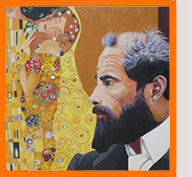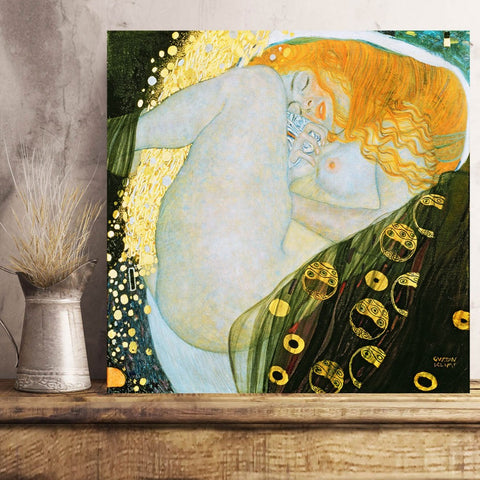Gustav KLIMT

Gustav KLIMT, Self-portrait.
Gustav KLIMT (1862 – 1918) was an Austrian painter and graphic artist, symbolist, and one of the most prominent members of the Vienna Secession movement. His main works include easel paintings, wall paintings, sketches, and other art objects, many of which are in the Vienna Secession Gallery. Klimt's primary subject was the female body, and his works are marked by a frank sensual eroticism. Gustav Klimt created enchanting art challenging societal norms. Often incorporating golden hues, ornate shapes, and dramatic lighting, he both scandalized and intrigued viewers with his luminous depictions of female figures and romance.
Early in his artistic career, he was a successful painter of architectural decorations in a conventional manner. As he began to develop a more personal style, his work was the subject of controversy that culminated when the paintings he completed around 1900 for the ceiling of the Great Hall of the University of Vienna were criticized as pornographic. He subsequently accepted no more public commissions but achieved a new success with the paintings of his "golden phase", many of which include gold leaf.
Despite his fame and generosity in mentoring younger artists, including Egon Schiele and Oskar Kokoschka, Klimt produced virtually no direct followers and his work has consistently been regarded as highly personal and singular.

Gustav KLIMT, Self-portrait.
Gustav KLIMT (1862 – 1918) was an Austrian painter and graphic artist, symbolist, and one of the most prominent members of the Vienna Secession movement. His main works include easel paintings, wall paintings, sketches, and other art objects, many of which are in the Vienna Secession Gallery. Klimt's primary subject was the female body, and his works are marked by a frank sensual eroticism. Gustav Klimt created enchanting art challenging societal norms. Often incorporating golden hues, ornate shapes, and dramatic lighting, he both scandalized and intrigued viewers with his luminous depictions of female figures and romance.
Early in his artistic career, he was a successful painter of architectural decorations in a conventional manner. As he began to develop a more personal style, his work was the subject of controversy that culminated when the paintings he completed around 1900 for the ceiling of the Great Hall of the University of Vienna were criticized as pornographic. He subsequently accepted no more public commissions but achieved a new success with the paintings of his "golden phase", many of which include gold leaf.
Despite his fame and generosity in mentoring younger artists, including Egon Schiele and Oskar Kokoschka, Klimt produced virtually no direct followers and his work has consistently been regarded as highly personal and singular.



